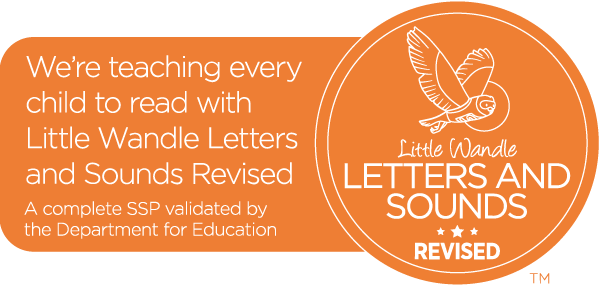Phonics
Phonics
At Harmony Primary School we believe that for all our pupils to become fluent readers and writers, phonics must be taught through a systematic and structured phonics programme.

We use the Little Wandle Letters and Sounds Revised to plan and provide daily engaging phonics lessons. In phonics, we teach pupils that the letters of the alphabet represent a different sound, that these can be used in a variety of combinations and are put together to make words. The pupils learn to recognise all of the different sounds and combinations that they might see when they are reading or writing. Our phonics teaching follows a very specific sequence that allows our pupils to build on their previous phonic knowledge and master specific phonic strategies as they move through school. As a result, all our pupils are able to tackle any unfamiliar words that they might discover. At Harmony we also model these strategies in shared reading and writing both inside and outside of the phonics lesson and across the curriculum. We have a strong focus on the development of language skills for our pupils because we know that speaking and listening are crucial skills for reading and writing in all subjects.
How we teach phonics and Early Reading
- Pupils are taught through the Little Wandle Letters and Sounds Revised. The focus is on daily oral blending and language development through high quality stories and rhymes.
- In Year 1, pupils follow the progression within Little Wandle Letters and Sounds Revised programme. Phonics is taught daily and there is a review session on a Friday.
- By the end of year 1, pupils will have been taught up to the end of phase 5.
- Pupils in year 2 recap any gaps in their phonics knowledge in the autumn term and once secure progress into the Spring term following the ‘bridge-to-spelling’.
- Across Key Stage 1 lessons are 30 minutes long, allowing for all pupils progress in phonics to be carefully assessed and developed.
Reading practice sessions
- Pupils across, year 1, year 2 apply their phonics knowledge by using a full matched decodable reader in a small group reading practice session.
- The sessions follow the model set out in Little Wandle Letters and Sounds Revised.
- The pupils then take an appropriately levelled book home the following week to ensure success is shared with the family.
How do we assess phonic knowledge?
- In year 1 and year 2 at the end of each week there is a review session which recaps the learning. There are also whole review weeks (pre-planned and bespoke review weeks to address gaps identified by the class teacher’s ongoing formative assessment).
- Pupils in Year 1 and 2 are grouped according to prior attainment and planning is adapted to meet their needs in line with the Little Wandle Letters and Sounds Revised programme.
- Pupils are assessed at the end of every half term using the Little Wandle Letters and Sounds Revised assessment tracker.
Reading for pleasure
Alongside daily teaching of phonics, reading for pleasure is an important part of our Early Reading offer. We ensure pupils develop a love of reading and are exposed to a range of interesting and relevant authors. We promote a love of reading in the following ways:
- Daily Form time reading for pleasure
- Teaching of poetry, which includes performing and learning a range of poems by heart.
- Daily story time at the end of each day which engenders a love of reading and storytelling.
- Whole class reading sessions which include a range of books that are mapped out to ensure pupils have a rich reading diet, vocabulary is explicitly taught so pupils can learn key phrases.
- Classroom libraries which have a careful selection of books, including books by the focus author. These are refreshed and updated by the class teacher.
- Alongside decodable reading books, pupils also take home a reading for pleasure book each week. In each year group, pupils will take home a range of book by authors, including some which they have read in class.
If you are a parent and would like more information about how to support your child with phonics at home, please follow this link to find the Year 1 overview as well as videos of the sound pronunciations, letter formation sheets and other helpful resources.
https://www.littlewandlelettersandsounds.org.uk/resources/for-parents/